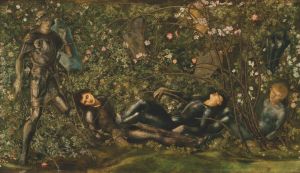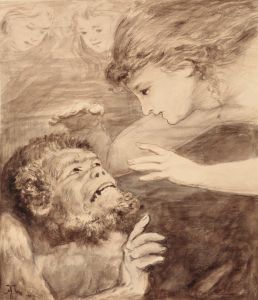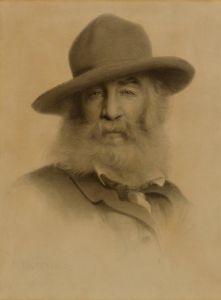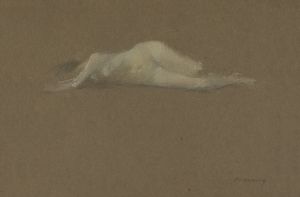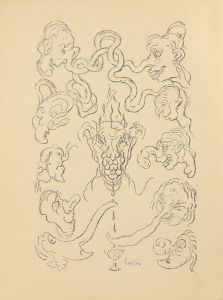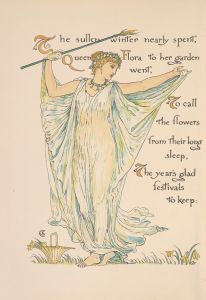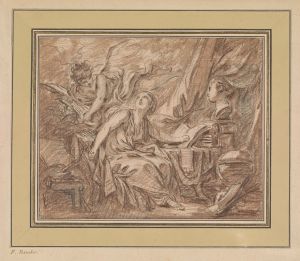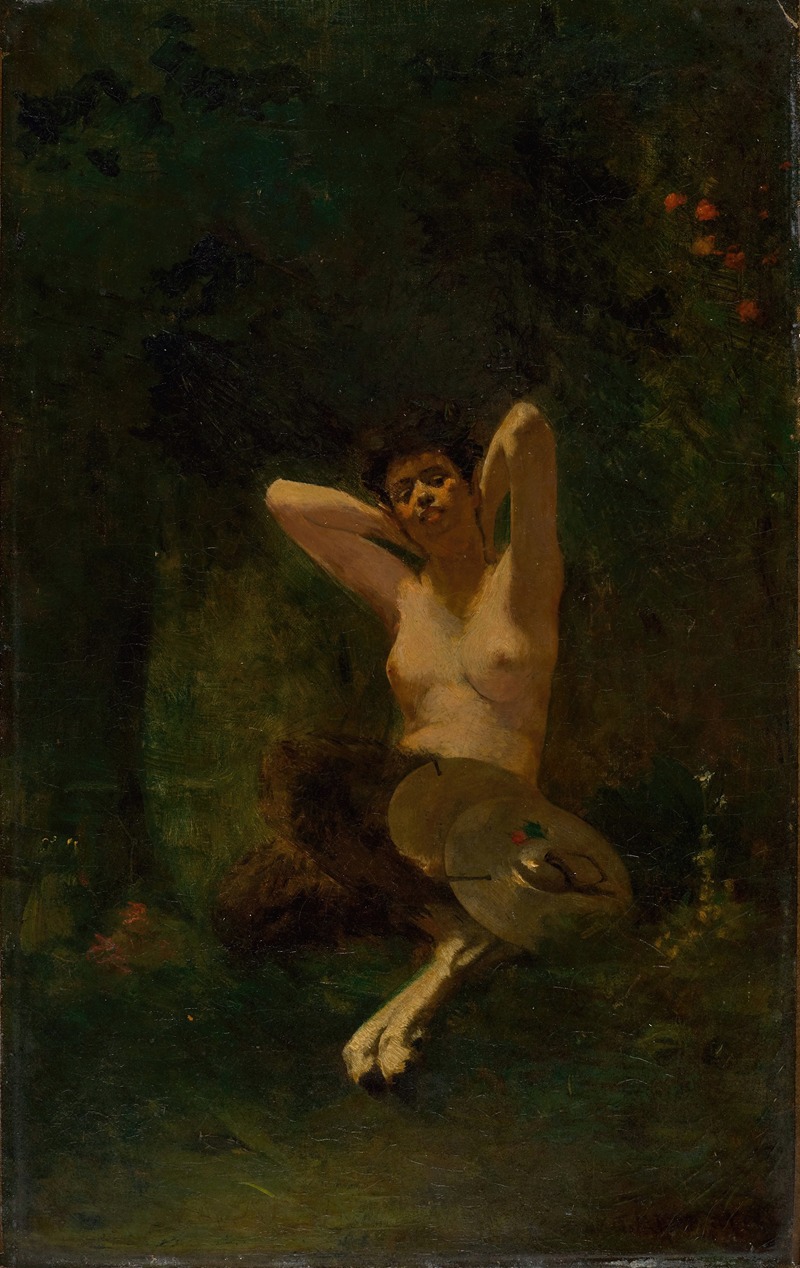
Faun
A hand-painted replica of Thomas Wilmer Dewing’s masterpiece Faun, meticulously crafted by professional artists to capture the true essence of the original. Each piece is created with museum-quality canvas and rare mineral pigments, carefully painted by experienced artists with delicate brushstrokes and rich, layered colors to perfectly recreate the texture of the original artwork. Unlike machine-printed reproductions, this hand-painted version brings the painting to life, infused with the artist’s emotions and skill in every stroke. Whether for personal collection or home decoration, it instantly elevates the artistic atmosphere of any space.
Thomas Wilmer Dewing's "Faun" is an exemplary piece of American Tonalism, a movement characterized by its use of muted colors and atmospheric effects to evoke mood and emotion. Dewing, an American painter born in 1851, was known for his refined and poetic depictions of women and landscapes, often blending elements of symbolism and aestheticism in his work.
"Faun," painted in 1891, is a notable example of Dewing's exploration of mythological themes. The painting features a faun, a mythological creature that is part human and part goat, often associated with rustic music and the Greek god Pan. Dewing's interpretation of the faun is subtle and imbued with a sense of mystery and tranquility, characteristic of his style. The faun is depicted in a serene landscape, surrounded by a soft, ethereal light that enhances the dreamlike quality of the scene.
Dewing's use of color in "Faun" is particularly noteworthy. He employs a limited palette, dominated by soft greens, browns, and grays, which contributes to the tonal harmony of the piece. This restrained use of color is a hallmark of Tonalism, where the emphasis is placed on mood rather than detail. The painting's surface is smooth and the brushwork is delicate, creating a sense of unity and calmness.
The composition of "Faun" reflects Dewing's interest in the aesthetic principles of balance and harmony. The faun is positioned slightly off-center, drawing the viewer's eye into the landscape and inviting contemplation. The surrounding foliage and distant hills are rendered with a gentle softness, enhancing the painting's meditative quality.
Dewing was a member of the Ten American Painters, a group of artists who broke away from the Society of American Artists in 1897 to pursue a more individualistic approach to art. His work, including "Faun," is often associated with the ideals of the Aesthetic Movement, which emphasized beauty and the visual experience over narrative content.
"Faun" is housed in the collection of the Smithsonian American Art Museum, where it continues to be appreciated for its subtle beauty and evocative atmosphere. The painting exemplifies Dewing's mastery of tonal harmony and his ability to convey a sense of timelessness and introspection through his art.
In summary, Thomas Wilmer Dewing's "Faun" is a significant work within the context of American Tonalism and the Aesthetic Movement. Its delicate rendering of a mythological subject, combined with its harmonious composition and restrained color palette, make it a quintessential example of Dewing's artistic vision and his contribution to American art at the turn of the 20th century.





